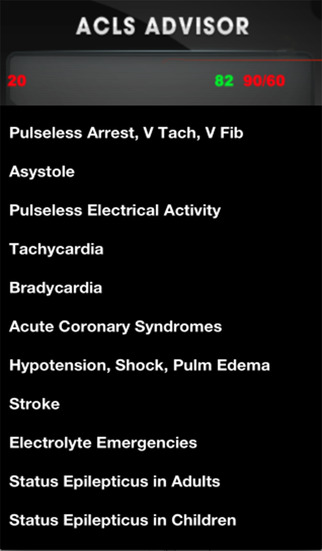What's New
Includes the just-released update for Amer Hrt Guidelines. New algorithm for ACLS pulseless arrest.
App Description
ACLS Advisor features the New 2015 American ACLS Guidelines. ACLS Advisor helps you learn basic life support and advanced cardiovascular life support. The automated cardiology advisor provides the appropriate the action that should be performed for each type of cardiac arrest. Defibrillator energies and resuscitation pharmacology are provided by the app.
Physicians, nurses, medical students, paramedics, and EMTs, can use this application to administer ACLS and basic life support.
Categories: Basic life support, ACLS, pulseless arrest, acute coronary syndromes, bradycardia, tachycardia, pulseless electrical activity, asystole, stroke, anaphylaxis, electrolyte abnormalities, asthma, toxicology, pediatric basic life support.
Learn to treat the underlying cause of arrhythmias.
Key Features:
• Drug indications
• Evidence-based guidelines
• Biphasic defibrillation
• Acute coronary syndromes
• Evidence-based guidelines
• ACLS algorithm flow charts
• Sample ECGs for easy reference
• Includes the new, updated 2015 ACLS changes
• Powered by the ACCI Cardiology Decision Engine
Review from imedicalapps.com:
“a well organized and easy to use application that walks you though the ACLS algorithms.” “this app hits a home run.”
“ well polished.” “a plethora of information, such as asthma, toxicology, stroke and pediatrics.”
“Physicians, residents, medical students, NPs, PAs, RNs, ANAs would benefit." “a great study aid if you’re about to take an ACLS course.”
Scrubs Magazine: "Top 10 iPhone Apps"
"A Must-have App."
What's new:
New National guideline updates.
Take a practice ACLS Certification test.
App Changes
- September 05, 2015 Initial release
- November 15, 2015 New version 2015.2






































